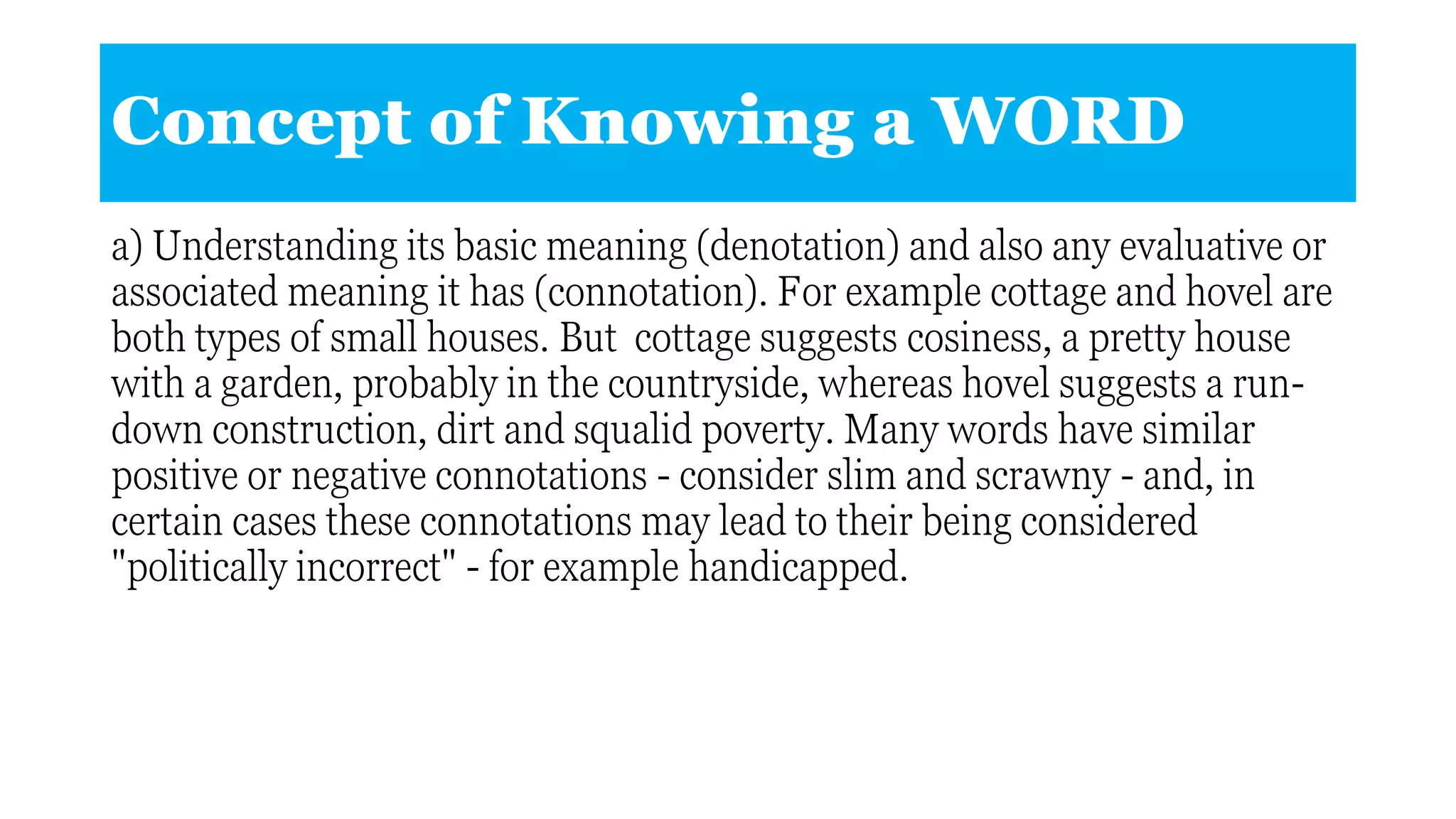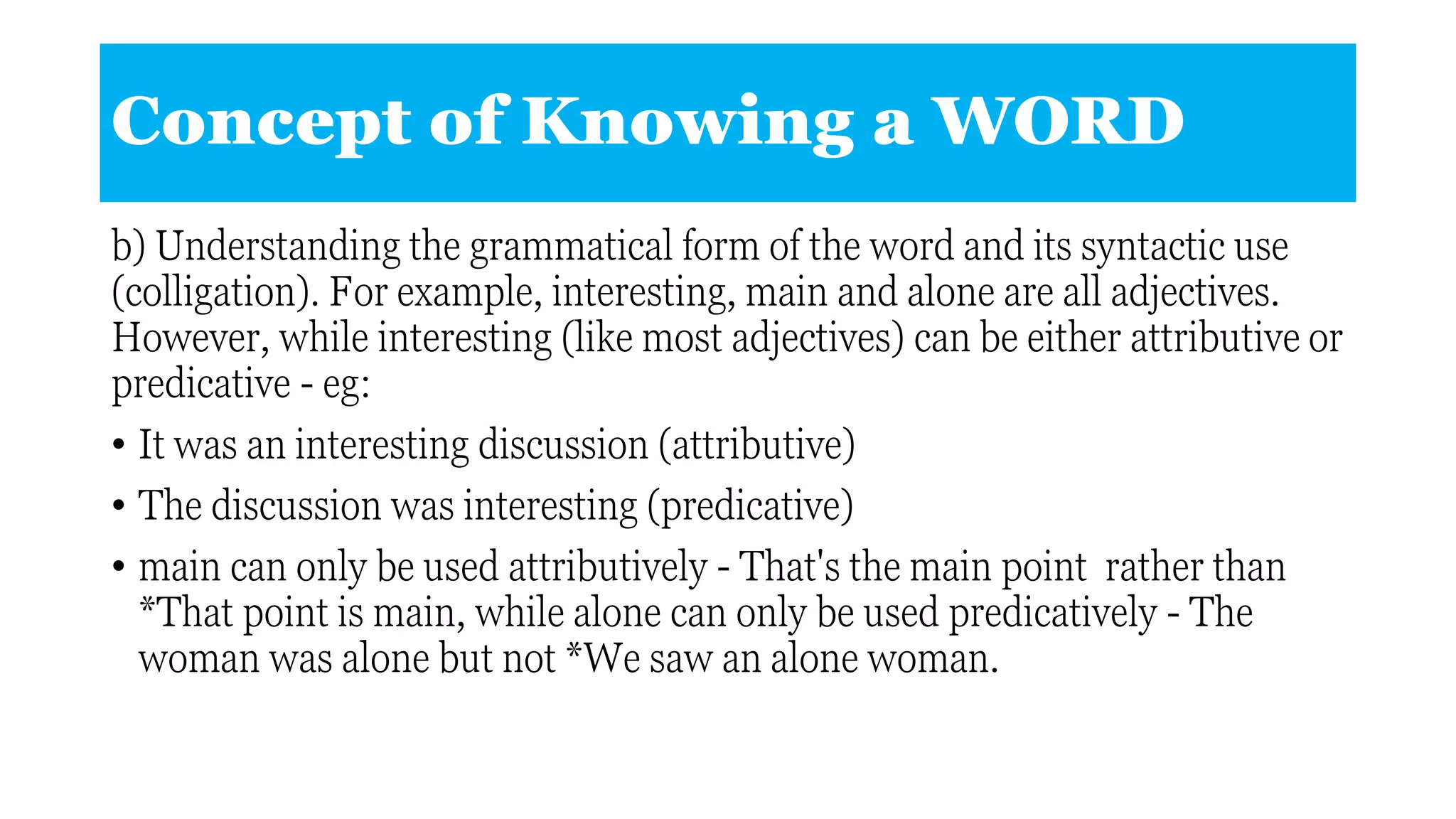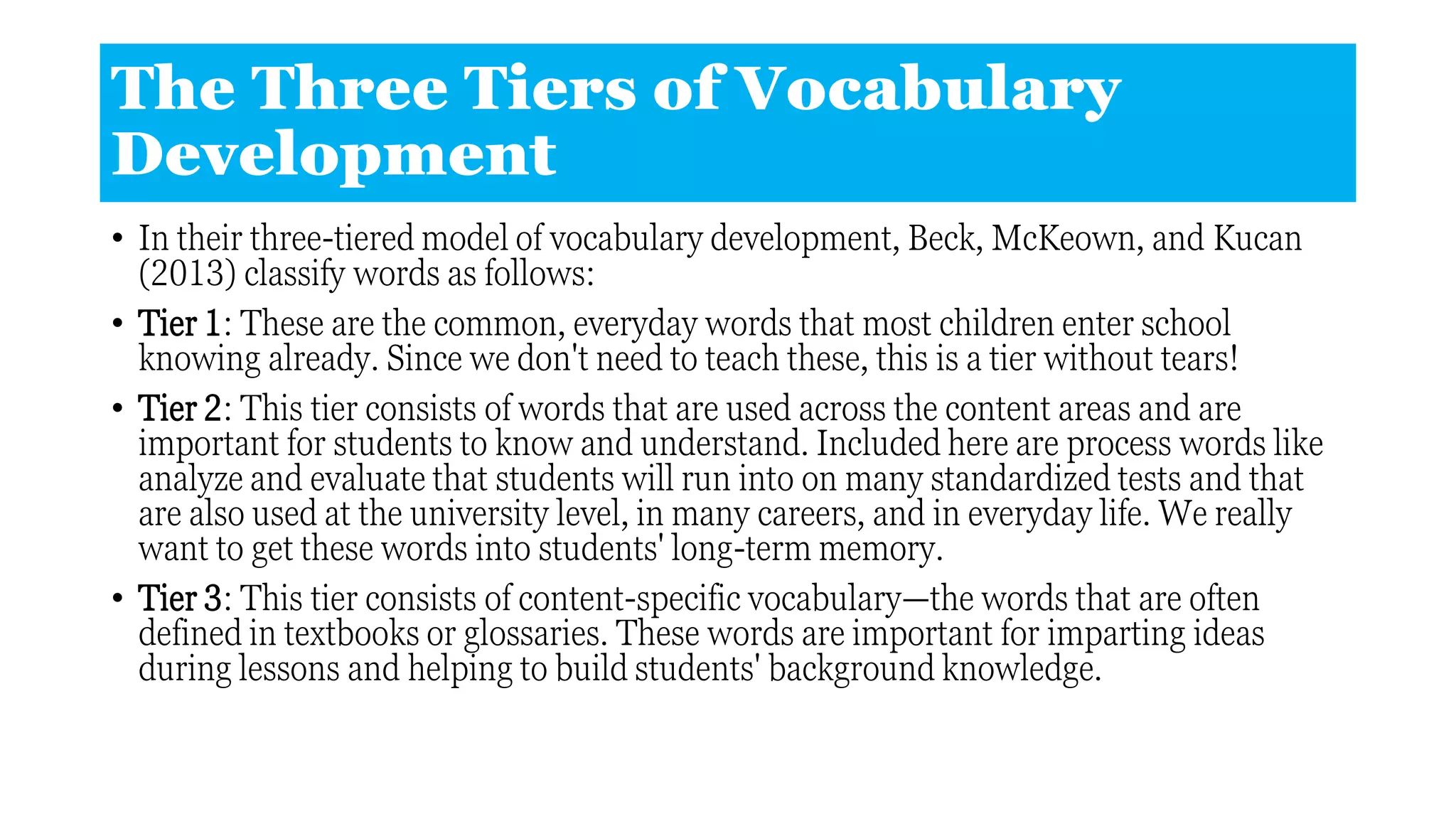The document discusses the importance of vocabulary in communication and knowledge acquisition, explaining various types and categories of vocabulary, including active and passive vocabularies. It outlines principles and frameworks for effectively teaching vocabulary, emphasizing the need for motivation, modeling, and mastery through varied learning strategies. Additionally, it covers the concepts of knowing a word, including denotation, connotation, grammar, and word relationships, guiding educators on how to enhance vocabulary development in students.







































![3 bonus strategies for teaching
vocabulary
• Word of the day
• Create a daily roster for students to share a newly discovered or unusual word with the
class. They can get creative with the definition too by acting it out, giving synonyms, or
doing a Pictionary style drawing on the board.
• Creative writing
• Compile the week’s ‘words of the day’ and task students with writing a story that uses
as many of them as possible. They’ll learn how to use their new vocabulary in context.
• Class glossary
• Build up a list of unfamiliar words the class encounters when reading a text or
studying a topic. Each student can choose a word and create a glossary page for it,
complete with a definition, pronunciation guide, sentence example, mnemonic
(memory aid), and an image that sums up its meaning.[/fusion_text][fusion_text]](https://image.slidesharecdn.com/teachingofvocab-210422083848/75/Teaching-of-Vocabulary-40-2048.jpg)



